How to clean the boiler?
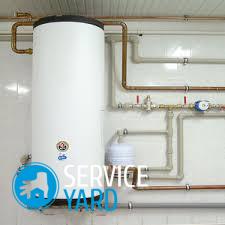
Water quality in cities leaves much to be desired, and even water treatment systems save for a short time. Therefore, if you are the owner of a boiler - do not forget to sometimes descale it. Read tips below for tips on how to clean the boiler.
If the heating element does not arrange preventive cleaning in time, this can result in a breakdown of the heating elements, and in the best case it will end with repair, and in the worst case, with the purchase of a new unit.
to contents ↑Why clean the boiler?
Before you clean the water heater from scale at home - Ariston or any other similar, you need to understand why this is necessary.
If you use the heater for a long time and do not clean its heating element and internal surface, various kinds of breakdowns are possible. But all of them will arise due to the fact that salt deposits located in the water accumulate on the surface of the heater.
Important! The boiler must be cleaned at least once every 3 years, or if it already signals an impending disaster. With hard water, such cleaning is recommended once a year.
Signals:
- Water began to heat more slowly.
- The water temperature has changed.
- Boiler increased power consumption.
- The storage tank began to overheat.
- If the appliance is often turned on and off.
- If hissing is heard when heating the water.
Cleaning options
In order to clean the boiler, you need to know how to clean it. In general, there are two of them: chemical and mechanical:
- The mechanical option is more complicated, because it requires more manual work, and if the heater is removed inaccurately, then the heater will have to be changed. Also, if connected incorrectly, a short circuit may occur.
- The chemical method is easier, it involves the use of special compounds. In this case, it is not necessary to remove the heating element.
Consider these methods in more detail.
Important! The very first thing you need to do before preparing to clean the water heater from scale at home is to prepare: disconnect the boiler from the network and drain the remaining water.
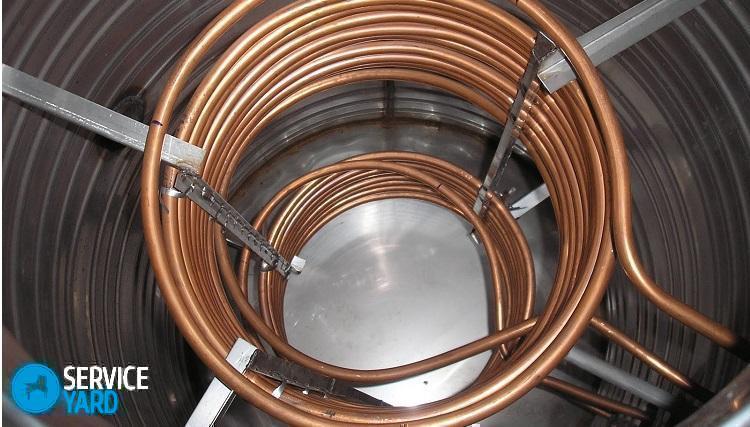
Drain the water:
- If the boiler is located above the bathtub, you are lucky; water can be easily drained directly into it.
- If not, you have to stock up on a large capacity tank. This way you can save a ton of time and drain the remaining water right before cleaning.
- If the boiler is located so that it is impossible to substitute a tank for it, you will have to work hard.
Procedure:
- We turn off the current supply, turn off the tap through which water enters the drive.
- Next to the heater, close the cold water tap, turn on the hot water on the mixer, wait until it spills.
- We find a short tube - a drain fitting, attach a hose to it, after lowering it into a container or drain hole.
- We open the tap on the boiler, drain the remaining water.
- If there are no taps and drain pipes, it is possible to drain the water using a safety valve. But then the process can drag on for more than 10 hours. Therefore, it is easier to wait until the liquid has cooled and drain the water according to the points listed.
- The only difference in the absence of a fitting is that you need to disconnect the hot water hose, and substitute any volumetric container. In order for the liquid to begin to leave the heater, you need to carefully unscrew the fuse valve. As soon as air enters the heater, water will flow from the nozzle.The valve can be disconnected, and regulate the flow of water by plugging the cold water fitting with your finger.
After draining the water, you can begin to clean the heater. How to clean the water heater, we learn further.
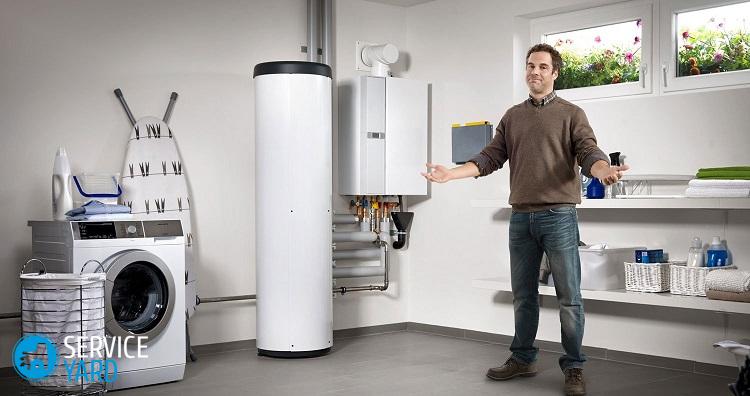
We clean TEN
Before you figure out how to clean the heater heater from scale, you need to remove it. For this:
- The bottom wall of the boiler is removed, all wires are disconnected, and the heating element is carefully pulled out.
- Next, you need to clean the storage tank. This is usually a straightforward procedure, as the main dirt is on the heater.
- A container is placed under the drive, and water is turned on. Incoming water will wash away internal contaminants.
- If the walls are coated with plaque, then to dissolve it is necessary to use special chemistry.
Cleaning the heater:
- All scum that can be cleaned is removed from the element. But be careful not to damage the heater.
- After preparing a solution of citric acid or vinegar: 20 gr. substances per 2 liters of water.
- The device is immersed in the solution and left for 24 hours.
- When the day has passed, the heating element must be installed back and the boiler connected.
There are also methods in which you do not have to remove the heater.
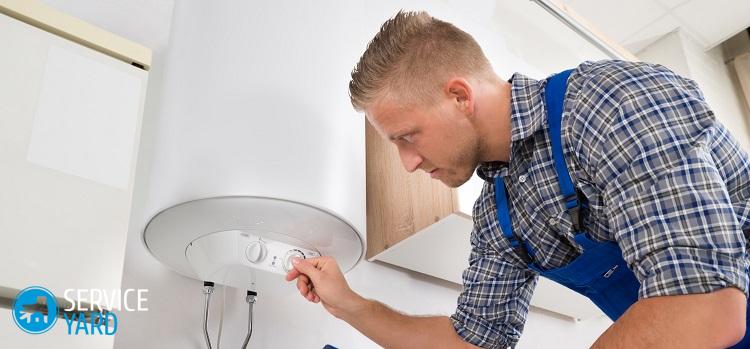
Clean without disassembling
If the scale has penetrated the boiler walls, or it was more difficult to disassemble it than in the standard version, there is an option how to clear the water heater from scale without disassembling. There are several ways in which accumulated salt deposits can be dissolved.
Facilities:
- Citric acid or vinegar. For cleaning, you need to take a stronger acid solution. 4 packages of substance or 40 grams are dissolved in the same 2 liters.
- Special means. Today, special cleaners for boilers are available in stores, instructions for them are written on the packaging.
Application
But the question arises: how to pour the product inside the heater to clean the boiler? - Everything is quite simple:
- Open the hot tap on the mixer.
- Drain the water until one third of the total volume remains in the tank.
- Next, all deposits are removed, which are removed by hand.
- Then a flexible tube is connected to the drain of the boiler, the agent is poured through it. It’s more convenient and faster to fill the tank if you raise the hose above the appliance.
- Further action is provided by the instruction. The tank is either collected and connected so that the water is heated, or left with detergent for the required time.
Important! With this method, it is important to remember that scum should not be removed with sharp objects and abrasive products.
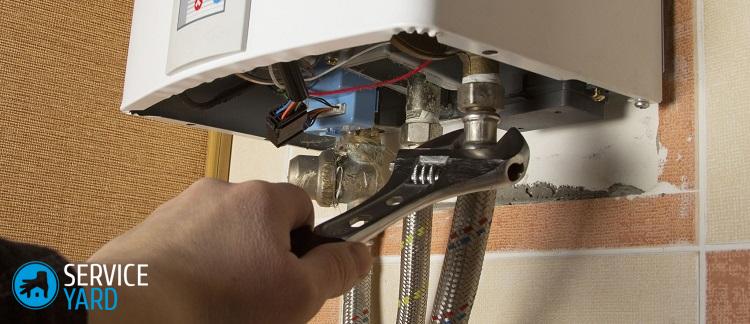
Dry heater: features of cleaning
Dry heating element differs from immersion (wet) one in that it is enclosed in a flask and does not contact with water directly, but through it. The essence of cleaning this type of heaters does not differ from the traditional method.
The only difference is that it is not worthwhile to remove the scale mechanically, since the risk of damaging the bulb protection is very high. A great option for cleaning this heater is to simply dip it in a solution of citric acid, vinegar, or a special cleaning agent.
Important! After the procedure, the heating elements are washed with water and installed in place. The element is ready to work in a wet state, the main thing is to correctly install it.
Cleaning a water heater, regardless of its type, is not difficult if you deal with all the nuances.
to contents ↑Magnesium anode
When disassembling the heater, it is important to pay attention to another key element necessary for its operation. This is a magnesium anode, which is located next to the heating element. The anode protects the device from rust, and gradually collapses during operation of the boiler.
Replacement is quite simple: the anode is twisted, and a new one is put in its place. In order not to disassemble the device several times a year, it is convenient to replace the element together with cleaning the heater.
Important! If the tank begins to leak before cleaning is required, this is a signal to immediately replace the element.
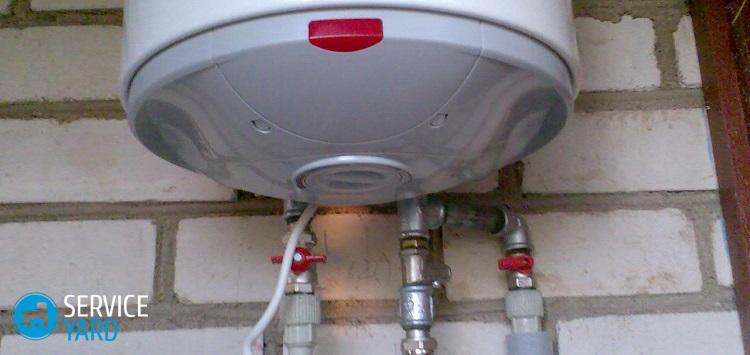
Advice
If you competently approach the cleaning of the boiler, then even at home you can easily get rid of scale. To clean the boiler and not spoil such an expensive unit, take note of the following nuances:
- In order not to remember how the contacts were connected, just take photos of them from different points.
- If you have already disassembled the boiler, examine its condition and replace the parts as necessary.
- If you use special descaling agents, be sure to read the instructions on how to clean the boiler from limescale, and follow its instructions.
- If the heater was not cleaned, the best option would be to purchase a new element and replace it. It is important to consider the type of heater, its power and the length of the contacts.
- To avoid frequent cleaning of the heater, use special water filters. They will soften hard water and the boiler will last longer.
- Before connecting the boiler to the network, make sure that the tank is filled with water.
- After you assemble the heater after cleaning, observe how it works for several hours. If a leak is found somewhere, measures must be taken to eliminate it.
Stock footage
Act as carefully as possible, because improper assembly or cleaning of the heater can lead to electric shock, breakdown, or even explosion of the device. If home cleaning is difficult, you can always seek help from the company that installed the boiler.
- How to choose a vacuum cleaner taking into account the characteristics of the house and coatings?
- What to look for when choosing a water delivery
- How to quickly create comfort at home - tips for housewives
- How to choose the perfect TV - useful tips
- What to look for when choosing blinds
- What should be running shoes?
- What useful things can you buy in a hardware store
- Iphone 11 pro max review
- Than iPhone is better than Android smartphones



